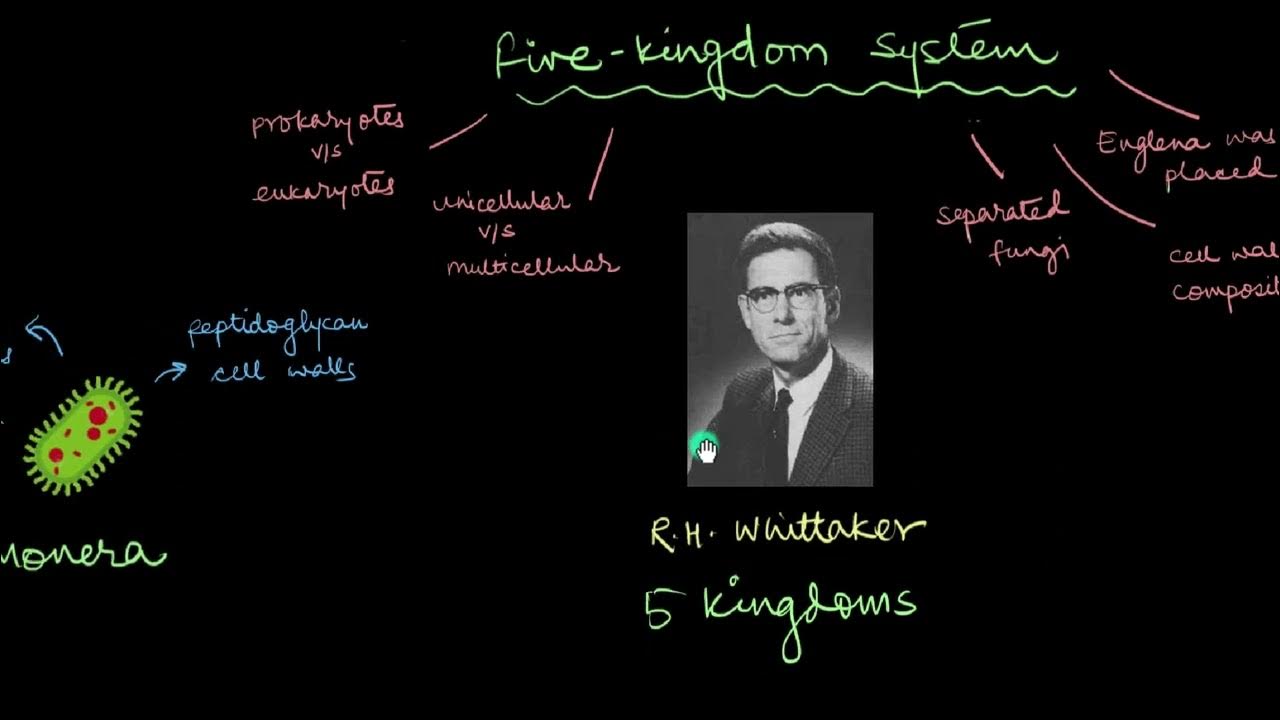Perkembangan Klasifikasi Makhluk Hidup
Summary
TLDRThis educational video delves into the evolution of biological classification, starting from a two-kingdom system comprising Animalia and Plantae. It progresses through the addition of Protista to form a three-kingdom system, then expands to a four-kingdom system with the inclusion of Monera. The video culminates in a discussion of a six-kingdom system, which also encompasses Fungi, Archaebacteria, and Eubacteria. The script emphasizes the dynamic nature of biological taxonomy and encourages viewers to engage with the content by liking and subscribing.
Takeaways
- 🌿 The script discusses the development of the classification of living organisms.
- 🔍 It starts with the two-kingdom system, which includes Kingdom Animalia and Kingdom Plantae.
- 🧬 The three-kingdom system expands on this by adding Kingdom Protista, which consists of single-celled organisms.
- 🔑 The four-kingdom system introduces Kingdom Monera, which includes bacteria.
- 📚 The five-kingdom system further refines the classification by adding Kingdom Fungi.
- 📈 The six-kingdom system is mentioned, which includes Kingdom Archaebacteria and Kingdom Eubacteria, in addition to the previous kingdoms.
- 👩🏫 The script is educational, aimed at explaining the evolution of biological classification systems.
- 🌐 The video transcript is likely from a lecture or educational content creator, as indicated by the closing remarks encouraging likes and subscriptions.
- 🤔 The script implies a need for understanding the diversity and complexity of life forms through various classification systems.
- 📝 The use of 'cladogram' suggests that the script will also cover phylogenetic trees, which are used to represent evolutionary relationships among species.
- 🕉 The script begins with a traditional Islamic greeting, indicating cultural or religious context in the presentation.
Q & A
What is the main topic of the video script?
-The main topic of the video script is the development of the classification system for living organisms.
What are the two original kingdoms mentioned in the script?
-The two original kingdoms mentioned are Kingdom Animalia (animals) and Kingdom Plantae (plants).
What is the third kingdom that was added to the classification system?
-The third kingdom that was added is Kingdom Protista, which includes single-celled organisms.
What is the fourth kingdom in the four-kingdom system?
-The fourth kingdom in the four-kingdom system is Kingdom Monera, which includes bacteria.
What are the five kingdoms mentioned in the script?
-The five kingdoms mentioned are Kingdom Animalia, Kingdom Plantae, Kingdom Protista, Kingdom Monera, and Kingdom Fungi.
What is the sixth kingdom in the six-kingdom system?
-The sixth kingdom in the six-kingdom system is Kingdom Eubacteria, which includes true bacteria.
What is the term for the classification system that includes Archaebacteria?
-The classification system that includes Archaebacteria is known as the six-kingdom system.
What is a cladogram and why is it mentioned in the script?
-A cladogram is a branching diagram used to represent the evolutionary relationships among organisms. It is mentioned in the script as a topic to be discussed after the development of the classification system.
What does the speaker encourage viewers to do at the end of the script?
-The speaker encourages viewers to like and subscribe to the video.
What is the greeting used by the speaker at the beginning and end of the script?
-The speaker uses the Islamic greeting 'Assalamualaikum warahmatullahi wabarakatuh' at the beginning and end of the script.
What is the significance of the applause sound in the script?
-The applause sound in the script likely indicates a transition point or a notable addition to the classification system being discussed.
Outlines

Dieser Bereich ist nur für Premium-Benutzer verfügbar. Bitte führen Sie ein Upgrade durch, um auf diesen Abschnitt zuzugreifen.
Upgrade durchführenMindmap

Dieser Bereich ist nur für Premium-Benutzer verfügbar. Bitte führen Sie ein Upgrade durch, um auf diesen Abschnitt zuzugreifen.
Upgrade durchführenKeywords

Dieser Bereich ist nur für Premium-Benutzer verfügbar. Bitte führen Sie ein Upgrade durch, um auf diesen Abschnitt zuzugreifen.
Upgrade durchführenHighlights

Dieser Bereich ist nur für Premium-Benutzer verfügbar. Bitte führen Sie ein Upgrade durch, um auf diesen Abschnitt zuzugreifen.
Upgrade durchführenTranscripts

Dieser Bereich ist nur für Premium-Benutzer verfügbar. Bitte führen Sie ein Upgrade durch, um auf diesen Abschnitt zuzugreifen.
Upgrade durchführenWeitere ähnliche Videos ansehen

Perkembangan Sistem Klasifikasi Makhluk Hidup

Systems of Classification | Biological Classification | Biology | Khan Academy

Klasifikasi 5 Kingdom Kelas 7 (part 2) ~Plantae dan Animalia

PRAKTIKUM KUNCI DETERMINASI SEDERHANA

Klasifikasi Makhluk Hidup (Part 2) "Klasifikasi dan Kunci Determinasi" Kurikulum Merdeka

Conheça os 5 Reinos dos seres vivos
5.0 / 5 (0 votes)
